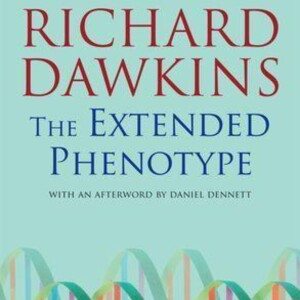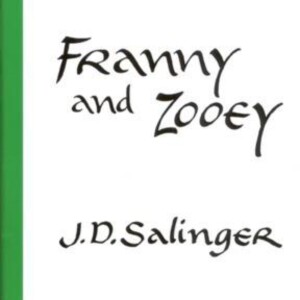Episodes

Thursday May 22, 2025
Thursday May 22, 2025
1 What's Complete Jewish Bible
The Complete Jewish Bible (CJB) presents the Scriptures with a focus on their Jewish context and heritage, aiming to bridge the gap between Judaism and Christianity. It includes the Old Testament (Tanakh) and the New Testament, translated to reflect the original Hebrew meaning and cultural nuances. The CJB emphasizes the continuity of God's covenant with His people, the significance of the Jewish roots of the Christian faith, and the teachings of Yeshua (Jesus) as a Jewish Messiah. Through its inclusive language and annotations, the CJB seeks to foster a deeper understanding and appreciation of the biblical text for both Jewish and Christian audiences.
2 Key Concepts of Complete Jewish Bible
In Chapter 1 of the Complete Jewish Bible, the theme revolves around the creation of the world and the establishment of God's order. Key chapters that relate to this theme include Genesis 1, where the account of creation is detailed, illustrating the power of God's word in bringing forth light, land, and life. Additionally, Genesis 2 expands on the relationship between God and humanity, highlighting the divine intention behind creation. Exodus 20, where the Ten Commandments are given, reflects God's established order for human living within the created world. These chapters collectively emphasize the foundational aspects of creation and the divine order intended for humanity.
3 In-Depth Chapter Analysis of Complete Jewish Bible by Anonymous
The Complete Jewish Bible (CJB) weaves together the themes of faith, covenant, and identity across its various chapters, echoing the core tenets of Judaism and offering a unique perspective on both the Tanakh (Hebrew Bible) and the New Testament writings. For instance, in Genesis, the covenant established with Abraham in Chapter 12 lays the foundational theme of a chosen people, highlighting a divine promise and responsibility that extends to his descendants. This notion of covenantal relationship manifests in the recurring narratives throughout the Torah that focus on Israel's journey, their struggles, and their guiding laws, illustrated in chapters such as Exodus where the giving of the Torah at Mount Sinai represents the formalization of this relationship.
Transitioning into the New Testament texts, the CJB presents a continuation of these themes through the life and teachings of Yeshua (Jesus). In Matthew 5, the Sermon on the Mount underscores the moral and ethical dimensions of the Jewish law, emphasizing how Yeshua fulfills the law rather than abolishing it—a crucial point in connecting Jewish identity and moral conduct to faith. This theme of fulfillment and continuity offers a bridge between the Hebrew Scriptures and the New Testament, as seen in Paul’s letters, where he often reflects on this covenantal relationship, advocating for the inclusion of Gentiles while upholding the Jewish law. Ultimately, the CJB encapsulates the intricate connections of faith and community through its chapters, inviting readers to engage with the complexities of Jewish identity and scriptural interpretation.
Book Summary Audio Bookey https://www.bookey.app/audiobook/complete-jewish-bible
Youtube https://www.youtube.com/watch?app=desktop&v=mUPNNwOhEhA
Amazon https://www.amazon.com/Complete-Jewish-Bible-Side-Side/dp/1598566598
Goodreads https://www.goodreads.com/book/show/82335.Complete_Jewish_Bible_

Wednesday May 21, 2025
Wednesday May 21, 2025
1 What's Before I Let Go
"Before I Let Go" by Kennedy Ryan explores themes of love, loss, and the complexities of relationships. The story centers on Yasmen, who must navigate her grief after the sudden death of her husband, while also wrestling with her feelings for Jae, her childhood friend. As Yasmen confronts her past and the life she must rebuild, the novel delves into the power of second chances, the importance of community, and the struggle to find joy amid heartbreak. Ryan's poignant storytelling highlights the resilience of the human spirit and the enduring bonds that shape our lives.
2 Key Concepts of Before I Let Go
In "Before I Let Go" by Kennedy Ryan, Chapter 1 introduces the theme of grief and the struggle to find closure after loss. This theme resonates throughout several chapters, particularly in Chapter 4, where the protagonist grapples with her memories and emotions tied to her lost loved one, exploring the complexities of moving on. Additionally, Chapter 7 delves into the protagonist's journey of healing and the necessity of facing her pain to embrace new beginnings, further emphasizing the importance of confronting grief to achieve emotional freedom. Together, these chapters highlight the ongoing battle with sorrow and the pursuit of hope.
3 In-Depth Chapter Analysis of Before I Let Go by Kennedy Ryan
In "Before I Let Go" by Kennedy Ryan, the themes of love, loss, and healing are intricately woven throughout the narrative, with each chapter contributing to the emotional depth of the story. For instance, in Chapter 5, the protagonist grapples with the haunting memories of her lost love while attempting to navigate her present life. This chapter highlights the theme of longing and the struggle to let go, as the protagonist reflects on the moments they shared, illustrating how the past continues to shape her identity. Specific details, such as her vivid recollections of their laughter and tenderness, further emphasize her internal conflict and the weight of unresolved emotions, showcasing how grief is not merely an ending but a continuous journey.
Conversely, Chapter 12 serves as a turning point, where the protagonist begins to embrace the possibility of healing and moving forward. The chapter is marked by a significant encounter that ignites a spark of hope within her. Here, the author beautifully captures the theme of renewal, as the protagonist realizes that love can coexist with loss. Specific examples, like her willingness to open her heart to new connections, demonstrate her growth and resilience. The juxtaposition of sorrow and hope in this chapter highlights the complex nature of love—how it can both hurt and heal. Through these chapters, Ryan effectively illustrates the multifaceted aspects of grief and the journey toward acceptance, grounding the emotional arc in relatable experiences.
Book Summary Audio Bookey https://www.bookey.app/audiobook/before-i-let-go
Quotes https://www.bookey.app/book/before-i-let-go/quote
Youtube https://www.youtube.com/watch?v=zYxwGXmFs8Q
Amazon https://www.amazon.com/Before-Let-Go-Kennedy-Ryan/dp/1538706792
Goodreads https://www.goodreads.com/book/show/60568471-before-i-let-go

Tuesday May 20, 2025
Tuesday May 20, 2025
1 What's The Extended Phenotype
In "The Extended Phenotype," Richard Dawkins expands on his concept of the gene-centered view of evolution, arguing that the influence of genes extends beyond the physical traits of organisms to include the effects they have on their environments and other organisms. He posits that the true expression of an organism's genetic information—its "extended phenotype"—can manifest in behaviors, structures, and ecological modifications that are not limited to the organism itself but can influence the survival and reproductive success of both the organism and its kin. This perspective challenges traditional views of heredity and emphasizes the interconnectedness of genes, behavior, and ecological interactions, highlighting the complexity of evolutionary processes.
2 Key Concepts of The Extended Phenotype
In "The Extended Phenotype," Richard Dawkins explores the concept of genes influencing not only the organism's physical traits but also its behavior and environment, extending their effects beyond the individual. This theme is prevalent throughout multiple chapters of the book, particularly in Chapter 2, where Dawkins discusses the role of parasites and how they manipulate host behavior, emphasizing the extended influence of genes. Additionally, Chapter 4 delves into the effects of genes on the architecture of animal structures, further illustrating the ways in which genetic information manifests beyond the organism itself, reinforcing the ideas presented in Chapter 1 about the far-reaching implications of the extended phenotype.
3 In-Depth Chapter Analysis of The Extended Phenotype by Richard Dawkins
In "The Extended Phenotype," Richard Dawkins expands on his foundational ideas about gene-centered evolution introduced in "The Selfish Gene." Each chapter builds on the theme that the influence of genes extends beyond the organism's body to the environment, exemplifying this with various case studies from nature. For instance, in Chapter 1, titled "The Extended Phenotype," Dawkins explicitly defines the concept, illustrating how genes can affect the behavior of organisms and create structures in their environment, such as beaver dams or spider webs, which serve as extensions of their phenotypic expression. This sets the tone for the book, showcasing how the effects of genes can manifest externally, thereby influencing ecological and evolutionary processes.
As the chapters progress, Dawkins presents compelling evidence through diverse examples—like the role of parasitic manipulation in Chapter 4, where the behavior of a larva changes the behavior of its host to aid its own survival and reproduction. This connection reinforces the central theme that genes influence not only the organisms they reside in but also the broader ecological canvas they interact with. For instance, Chapter 9 interprets the intricate behaviors of social insects, further exhibiting how the actions driven by genetic imperatives sculpt complex social structures. The culmination of these insights positions the extended phenotype as a crucial framework for understanding evolution, emphasizing that genes are integral in crafting both biology and the environment in which life unfolds.
Book Summary Audio Bookey https://www.bookey.app/audiobook/the-extended-phenotype
Quotes https://www.bookey.app/book/the-extended-phenotype/quote
Youtube https://www.youtube.com/watch?v=WQkPaRsHAwI
Amazon https://www.amazon.com/Extended-Phenotype-Reach-Popular-Science/dp/0192880519
Goodreads https://www.goodreads.com/book/show/61538.The_Extended_Phenotype

Monday May 19, 2025
Monday May 19, 2025
1 What's The Millennium Wolves
"The Millennium Wolves" by Sapir A. Englard is a paranormal romance novel that explores themes of love, desire, and the struggle for power within a world inhabited by werewolves. The story follows a young woman named Elysia, who navigates the complex dynamics of wolf packs and their political intrigues while grappling with her own identity and latent abilities. As tensions rise between rival factions, Elysia finds herself torn between her growing feelings for a powerful alpha and her duty to protect her loved ones, ultimately leading to a journey of self-discovery and the pursuit of true belonging in a tumultuous supernatural landscape.
2 Key Concepts of The Millennium Wolves
In "The Millennium Wolves," Chapter 1 establishes a theme of forbidden attraction and the complexities of desire. This theme resonates throughout the novel, particularly in chapters that explore the protagonist's interactions with the wolves and their seductive allure. Key chapters that relate to this theme include those that delve into the protagonist's internal conflicts regarding her feelings for the wolves, her struggles to resist their pull, and the dangers that come with such attraction. The tension between desire and the consequences of embracing it is a recurring motif that deepens the emotional stakes of the story, illustrating the allure and peril of forbidden love in a supernatural context.
3 In-Depth Chapter Analysis of The Millennium Wolves by Sapir A. Englard
"The Millennium Wolves" by Sapir A. Englard explores themes of desire, power dynamics, and the complexity of relationships through its various chapters. In the early chapters, we are introduced to the protagonist, Leah, who grapples with her identity and the intense pull of her desires within a supernatural framework. For example, Chapter 2 emphasizes Leah's awakening to her wolf heritage, symbolizing the duality of her nature—the human and the primal. This internal conflict sets the stage for her struggles throughout the narrative, highlighting the theme of self-discovery as she navigates love and power within her pack.
As the story progresses, particularly in Chapter 5, the theme of power dynamics is further explored through Leah's interactions with her love interests, particularly those who wield influence in the werewolf hierarchy. The chapter's tension underscores the dangers of desire coupled with vulnerability, as Leah is torn between her yearning for independence and the allure of submission to a dominant partner. This chapter exemplifies the overarching theme of the struggle for agency in relationships, illustrating how Leah's choices and desires shape her path, while also reflecting on societal expectations and personal empowerment. The intricate connections between these chapters create a rich tapestry that highlights the visceral and often tumultuous journey of self-realization amidst supernatural challenges.
Book Summary Audio Bookey https://www.bookey.app/audiobook/the-millennium-wolves
Youtube https://www.youtube.com/watch?v=IlGdZbdkNF0
Amazon https://www.amazon.com/Cloak-Vampire-Sapir-Englard-ebook/dp/B0CMF4Y1NG
Goodreads https://www.goodreads.com/book/show/60120175-the-millennium-wolves-series

Friday May 09, 2025
Friday May 09, 2025
1 What's One Flew Over the Cuckoo's Nest
"One Flew Over the Cuckoo's Nest" by Ken Kesey explores themes of individuality, freedom, and the struggle against oppressive systems through the experiences of Randle McMurphy, a rebellious patient in a mental institution. The novel contrasts McMurphy's vibrant, nonconformist spirit against the authoritarian control of Nurse Ratched, who embodies the dehumanizing forces of society. As McMurphy rallies the other patients to assert their identities and resist conformity, the story delves into the effects of institutionalization and examines the fine line between sanity and insanity. Ultimately, it is a poignant critique of societal norms and the loss of personal autonomy.
2 Key Concepts of One Flew Over the Cuckoo's Nest
In Chapter 1 of "One Flew Over the Cuckoo's Nest," the theme of control and authority is established, particularly through the depiction of Nurse Ratched's oppressive management of the mental ward. This theme is further explored in Chapter 2, where the strict routines of the ward highlight the dehumanization of the patients, as well as in Chapter 3, when McMurphy's arrival challenges Nurse Ratched's authority. His rebellious spirit begins to inspire the other patients, creating a conflict between individual freedom and institutional control. The struggle against the oppressive structure of the hospital is a recurring motif that unfolds throughout the novel.
3 In-Depth Chapter Analysis of One Flew Over the Cuckoo's Nest by Ken Kesey
In "One Flew Over the Cuckoo's Nest," Ken Kesey explores themes of individuality versus conformity primarily through the interactions between Randle P. McMurphy and Nurse Ratched, particularly highlighted in the early chapters. In Chapter 1, Chief Bromden introduces the oppressive atmosphere of the mental ward, describing it as a “Combine” that enforces conformity and suppresses individuality. This sets the stage for McMurphy’s arrival in Chapter 2, where his rebellious spirit becomes a catalyst for change. His defiance against Nurse Ratched’s strict control symbolizes the struggle for personal freedom against institutional oppression. For example, when McMurphy wagers with the other patients on whether he can outsmart Nurse Ratched, it illustrates his challenge to the established order and his role as a liberator for the other patients.
As the story progresses, particularly in Chapters 4 and 5, McMurphy's influence leads the men to reclaim their individual voices, as evidenced by their participation in the fishing trip and the subsequent exposure to the outside world. This pivotal event underscores the theme of empowerment through community and shared experiences, contrasting sharply with the isolation and dehumanization that Nurse Ratched represents. Overall, Kesey uses these early chapters to establish the conflict between individuality and the oppressive nature of institutional control, setting the groundwork for the broader existential themes explored throughout the novel.
Book Summary Audio Bookey https://www.bookey.app/audiobook/one-flew-over-the-cuckoo's-nest
Quotes https://www.bookey.app/book/one-flew-over-the-cuckoo%27s-nest/quote
Youtube https://www.youtube.com/watch?v=BJjNIoODO2k
Amazon https://www.amazon.com/One-Flew-Over-Cuckoos-Nest/dp/0451163966
Goodreads https://www.goodreads.com/book/show/12697427-one-flew-over-the-cuckoo-s-nest

Thursday May 08, 2025
Thursday May 08, 2025
1 What's Maus I
"Maus I" by Art Spiegelman explores the harrowing experiences of the author's father, Vladek Spiegelman, a Polish Jew and Holocaust survivor. The book uses a unique visual style where characters are depicted as anthropomorphic animals—Jews as mice, Germans as cats—highlighting the brutal realities of the Holocaust while also delving into the complexities of the father-son relationship. The narrative oscillates between Vladek's recollections of life in Auschwitz and Spiegelman's contemporary struggles to understand his father's trauma and the lasting impact of the Holocaust on their family. Ultimately, "Maus I" examines themes of survival, memory, and the generational effects of trauma, portraying the challenges of reconciling personal and collective histories.
2 Key Concepts of Maus I
In Chapter 1 of "Maus I" by Art Spiegelman, the theme of memory and the impact of the past on the present is introduced through Vladek's recollections of his experiences during the Holocaust. This theme is explored throughout several chapters in the book. For example, Chapter 2 delves into Vladek's early life and courtship with Anja, illustrating how their memories shape their identities and relationships. Additionally, Chapter 3 depicts the harrowing reality of ghetto life, emphasizing how traumatic events are etched into memory. Overall, these chapters reflect the ongoing struggle of characters to reconcile their past experiences with their present lives, underscoring the profound effects of memory on both individuals and families.
3 In-Depth Chapter Analysis of Maus I by Art Spiegelman
In "Maus I," Art Spiegelman intertwines the themes of trauma, memory, and survival through the experiences of his father, Vladek Spiegelman, a Polish Jew and Holocaust survivor. The first chapter, "The Sheik," sets the stage for the overarching narrative as Art interviews Vladek about his past, introducing the complex father-son dynamic and the legacy of trauma that permeates their relationship. The use of anthropomorphic characters—Jews as mice, Germans as cats—highlights the predator-prey relationship during the Holocaust, emphasizing the dehumanizing aspects of this historical tragedy. This chapter also presents the theme of memory, as Vladek's fragmented recollections and the way he recounts his experiences depict the struggle to reconcile painful memories with present realities.
Subsequent chapters, such as "Prisoner on the Hell Planet," delve deeper into the impact of the Holocaust on individual lives and relationships. In this chapter, Art grapples with the loss of his mother, Vladeck's first wife, and the complexities of grief and guilt. The visual representation of the Holocaust through stark imagery and contrasting styles emphasizes the horror of his parents' experiences while framing Art's own struggles with identity and his attempt to understand his father's trauma. By juxtaposing past and present, Spiegelman effectively underscores how the Holocaust's scars extend beyond direct survivors, affecting subsequent generations. The interplay of these narrative threads throughout "Maus I" highlights not only the historical events of the Holocaust but also the lasting emotional ramifications of trauma and the search for personal and familial identity in its aftermath.
Book Summary Audio Bookey https://www.bookey.app/audiobook/maus-i
Youtube https://www.youtube.com/watch?v=kM3XMsLayxs
Amazon https://www.amazon.com/Maus-Survivors-Father-Bleeds-History/dp/0394747232
Goodreads https://www.goodreads.com/book/show/15196.Maus_I

Wednesday May 07, 2025
Wednesday May 07, 2025
1 What's Glucose Revolution
"Glucose Revolution" by Jessie Inchauspé explores the significant impact of glucose on our health and well-being, emphasizing the importance of managing blood sugar levels for improved energy, better mood, and weight control. Inchauspé presents scientific insights alongside practical strategies, such as dietary choices and lifestyle habits, to help readers stabilize their glucose levels, thereby highlighting how small changes can lead to substantial health benefits. The book empowers readers with actionable tips and a deeper understanding of how glucose affects daily life, ultimately encouraging a more informed approach to nutrition and self-care.
2 Key Concepts of Glucose Revolution
In "Glucose Revolution" by Jessie Inchauspé, Chapter 1 introduces the theme of how glucose levels impact our health and well-being. Subsequent chapters that relate closely to this theme include Chapter 2, which delves into the physiological effects of glucose spikes and falls, and Chapter 5, which offers practical strategies for stabilizing blood sugar levels through dietary choices. Both chapters expand on the foundational ideas presented in Chapter 1, illustrating the significance of glucose management in overall health.
3 In-Depth Chapter Analysis of Glucose Revolution by Jessie Inchauspé
In "Glucose Revolution," Jessie Inchauspé captures the intricate relationship between glucose levels and overall health across its chapters, elucidating how blood sugar management impacts not only physical well-being but also mental clarity and emotional stability. For instance, in the early chapters, Inchauspé emphasizes the importance of understanding how different foods affect glucose spikes. She provides practical strategies, such as consuming fiber before carbohydrates, which highlight the theme of self-awareness and proactive health management. By incorporating personal anecdotes and scientific research, she encourages readers to take charge of their nutrition, illustrating that small changes can lead to significant improvements in energy levels and mood stability.
As the book progresses, Inchauspé delves into more nuanced topics such as the effects of stress and sleep on glucose regulation. In chapters dedicated to these themes, she presents compelling evidence linking emotional health with metabolic function, proposing that managing stress can lead to more stable blood sugar levels. The practical tips she provides—such as integrating mindfulness practices or ensuring adequate sleep—further reinforce her overarching theme that glucose control transcends mere dietary choices, influencing various aspects of life and fostering a holistic approach to health. This interconnectedness invites readers to reassess their daily habits and empowers them with knowledge, ultimately fostering a deeper understanding of their metabolic health.
Book Summary Audio Bookey https://www.bookey.app/audiobook/glucose-revolution
Quotes https://www.bookey.app/book/glucose-revolution/quote
Youtube https://www.youtube.com/watch?v=NfmRORU1HIA
Amazon https://www.amazon.com/Glucose-Revolution-Life-Changing-Power-Balancing/dp/1982179414
Goodreads https://www.goodreads.com/book/show/58438618-glucose-revolution

Tuesday May 06, 2025
Tuesday May 06, 2025
1 What's Franny and Zooey
"Franny and Zooey" by J.D. Salinger explores the complexities of spirituality, family dynamics, and the search for authenticity in a superficial world. The novel is divided into two parts, focusing on siblings Franny and Zooey Glass, whose intellectual and existential struggles highlight their disillusionment with societal norms and the pressures of their upbringing in a highly intellectual, yet emotionally distant, family. Franny grapples with a profound spiritual crisis during a visit to a college campus, while Zooey, as her older brother, tries to guide her through her doubts and insecurities, ultimately emphasizing the need for genuine human connections and compassion. Through their interactions and reflections, Salinger delves into themes of love, faith, and the longing for deeper meaning in life.
2 Key Concepts of Franny and Zooey
In "Franny and Zooey" by J.D. Salinger, the theme introduced in Chapter 1 revolves around the spiritual struggles and existential crises faced by the characters. This theme is further explored in Chapter 2, where Franny's profound disillusionment with the superficiality of the world around her becomes evident during her experience at the restaurant. Additionally, Chapter 3 delves into Zooey's attempts to help Franny navigate her distress, emphasizing the complexities of familial relationships and the search for authenticity. The conversations and reflections throughout these chapters deepen the exploration of spirituality, authenticity, and the burdens of intellectualism.
3 In-Depth Chapter Analysis of Franny and Zooey by J.D. Salinger
"Franny and Zooey," by J.D. Salinger, is divided into two distinct parts that are thematically interconnected, primarily exploring the concepts of spirituality, existentialism, and the challenges of interpersonal relationships. The first part, "Franny," focuses on Franny Glass's spiritual crisis during her visit to a college campus. She grapples with the inauthenticity she perceives in the world around her, leading to her emotional and physical breakdown. For instance, her increasing disillusionment is epitomized in her rejection of superficial conversations and the quest for genuine connection, emphasizing her search for a deeper meaning in life. This sets the stage for the overarching theme of spiritual yearning, illustrating the difficulties of navigating a world that often prioritizes intellectualism over true understanding.
In the second part, "Zooey," readers witness Franny's brother, Zooey Glass, as he attempts to guide her through her crisis. Through his interactions with her, Zooey embodies a pragmatic yet compassionate approach to spirituality and self-acceptance. The pivotal moment occurs when Zooey delivers a heartfelt monologue about the importance of love and connecting with others, highlighting that true insight comes not from grand ideas but from the simple act of empathy. This connection between the siblings serves to illustrate the theme of familial bonds and the redemptive power of love. Ultimately, both chapters complement each other, with Franny's spiritual despair leading to Zooey's realization of how personal relationships can ground individuals amid confusion and despair.
Book Summary Audio Bookey https://www.bookey.app/audiobook/franny-and-zooey
Quotes https://www.bookey.app/book/franny-and-zooey/quote
Youtube https://www.youtube.com/watch?v=nf21pE9QCd0
Amazon https://www.amazon.com/Franny-Zooey-J-D-Salinger/dp/0316769495
Goodreads https://www.goodreads.com/book/show/5113.Franny_and_Zooey

Wednesday Apr 30, 2025
Wednesday Apr 30, 2025
1 What's The Score
"The Score" by Elle Kennedy follows the evolving relationship between college students and roommates, Dean and Allie, as they navigate the complexities of love, friendship, and self-discovery amidst the backdrop of college life. The novel explores themes of emotional vulnerability, the impact of past traumas, and the challenges of balancing personal aspirations with romantic entanglements. With a blend of humor, passion, and relatable experiences, Dean and Allie's journey highlights the importance of communication and trust in building a lasting connection.
2 Key Concepts of The Score
In "The Score" by Elle Kennedy, the theme of unexpected connections and the complexity of relationships introduced in Chapter 1 reverberates throughout the story, particularly in Chapters 6 and 12. In Chapter 6, the evolving dynamic between the main characters showcases how initial impressions can shift as deeper emotional layers are revealed. By Chapter 12, the theme deepens as characters confront their vulnerabilities, further illustrating how love and friendship can emerge from the most unlikely circumstances, ultimately reinforcing the narrative's exploration of intimacy and personal growth.
3 In-Depth Chapter Analysis of The Score by Elle Kennedy
In "The Score" by Elle Kennedy, the themes of love, friendship, and personal growth are intricately woven throughout various chapters. For instance, in Chapter 7, the protagonist, Allie, navigates her burgeoning feelings for Dean while reconciling her past relationship with her best friend, highlighting the complexity of balancing love and loyalty. This chapter illustrates how friendships can evolve and be tested, as Allie grapples with her emotions while remaining steadfast in her loyalty to those she cares about. The dialogues and intimate moments between Allie and Dean reveal the theme of vulnerability in romantic connections, as both characters confront their fears and insecurities.
In Chapter 12, the narrative pivots towards personal growth, as both Allie and Dean face challenges that force them to confront their individual shortcomings. This chapter emphasizes self-discovery, particularly through Dean's struggle with commitment and how it affects his relationship with Allie. The tension in their relationship serves as a catalyst for Dean’s transformation, showing that love often requires individuals to face their inner demons. The resolution of this chapter resonates with the overarching theme that true love not only involves passion but also the willingness to grow and change alongside a partner. Overall, "The Score" adeptly intertwines these themes, making each chapter a reflection of the characters' evolving relationships and personal journeys.
Book Summary Audio Bookey https://www.bookey.app/audiobook/the-score-by-elle-kennedy
Youtube https://www.youtube.com/watch?v=tFXFJ8zPd1I
Amazon https://www.amazon.com/Score-Off-Campus-Book-3-ebook/dp/B016VQCFO0
Goodreads https://www.goodreads.com/book/show/44593125-the-score

Tuesday Apr 29, 2025
Tuesday Apr 29, 2025
1 What's The Last Letter
"The Last Letter" by Kathleen Shoop revolves around themes of love, loss, and the impact of war on personal relationships. The story follows the protagonist, who grapples with the emotional aftermath of her husband's deployment during World War II. Through a series of poignant letters, she reflects on their shared memories and the challenges of maintaining connection amid uncertainty. The narrative highlights the resilience of love and the haunting weight of unspoken words, ultimately showcasing the profound effects of war on both individuals and families.
2 Key Concepts of The Last Letter
In "The Last Letter," the theme of love and loss introduced in Chapter 1 resonates deeply throughout several chapters, particularly in Chapters 3, 5, and 7. In Chapter 3, the protagonist reflects on cherished memories with a significant other, highlighting the bittersweet nature of their connection. Chapter 5 delves into the pain of separation, showcasing how love can be intertwined with grief. Finally, in Chapter 7, the character grapples with the enduring impact of their lost love, reinforcing the idea that love persists even in its absence. Together, these chapters encapsulate the exploration of love’s complexities and the heartache that often accompanies it.
3 In-Depth Chapter Analysis of The Last Letter by Kathleen Shoop
In Kathleen Shoop's "The Last Letter," the chapters intricately weave themes of love, loss, and the enduring power of memory. For instance, in Chapter 3, the protagonist's discovery of a poignant letter from her deceased lover serves as a catalyst for her emotional journey, highlighting the lingering impact of unresolved feelings. This letter not only rekindles her memories but also forces her to confront her past decisions, illustrating the theme of how love can transcend time and loss. The letter acts as a physical representation of her grief and the complexities of moving on, reinforcing the idea that love, even when lost, continues to shape one's identity and choices.
In Chapter 7, the narrative delves deeper into the protagonist's struggle with acceptance and healing. As she navigates relationships in her present life, the memories sparked by the letter challenge her to embrace vulnerability and openness to new love. The interactions with secondary characters highlight her growth and the theme of resilience, showing that while the past cannot be changed, it can inform the future in profound ways. This chapter exemplifies the idea that reconciliation with one's history is crucial for personal growth, emphasizing that the journey through love and loss is integral to one's emotional evolution. Together, these chapters underscore the complex interplay between memory, love, and healing, creating a rich tapestry of themes that resonate throughout the novel.
Book Summary Audio Bookey https://www.bookey.app/audiobook/the-last-letter
Youtube https://www.youtube.com/watch?v=gzxbjizJl4w
Amazon https://www.amazon.com/Last-Letter-1/dp/1456347209
Goodreads https://www.goodreads.com/book/show/11370147-the-last-letter








